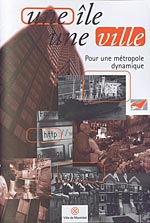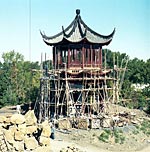

Pierre Bourque, 40th mayor of Montréal
When he ran for mayor of Montréal in the spring of 1994, Pierre Bourque was a well-known horticulturist. He had been a senior city officer for nearly 30 years. He was responsible for or was involved in many major projects: the landscape installation of Expo 67, the Floralies internationales, the Botanical Garden, as well as the Biodôme.
On November 6, 1994, Pierre Bourque became mayor and 39 councillors of his Vision Montreal party were elected. His first term was marked by difficulties and by unpopular budgetary decisions intended to revive the municipal administration. On November 1, 1998, Montrealers decide to re-elect Bourque and a majority of his teammates.
At the end of his first term, Pierre Bourque flirted with the idea one island, one city. In the spring of 1997, he and other mayors of important cities submitted a report to the prime minister of Québec, Lucien Bouchard. They called for the mergers of municipalities. The “one island, one city” concept had been put forth by Jean Drapeau at the beginning of the 1960s.
The project of municipal merger took form within the Québécois government. Bill 170 and bill 171 were adopted on December 20, 2000, and created only one municipality on the island of Montréal. As of January 2001, the metropolitan community was set up and the transition committee began its work. There was fierce opposition to forced mergers.






















